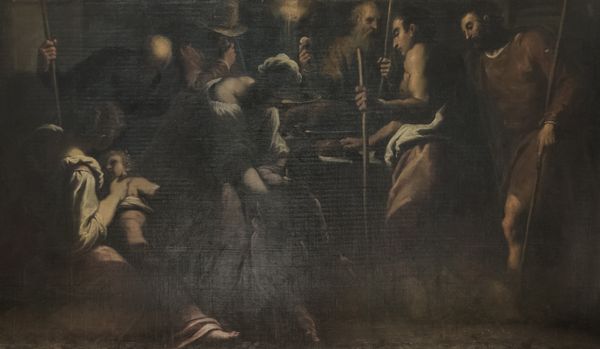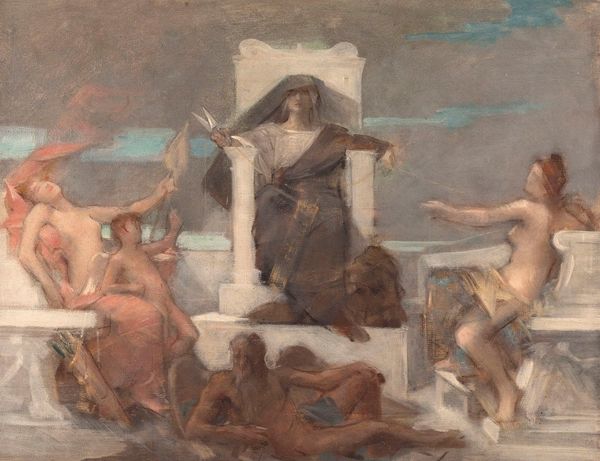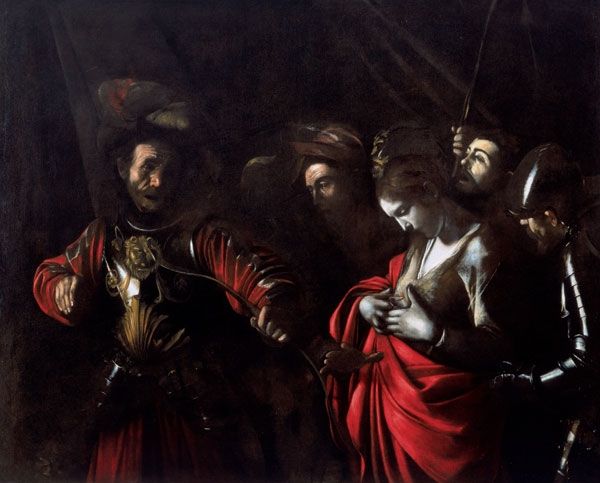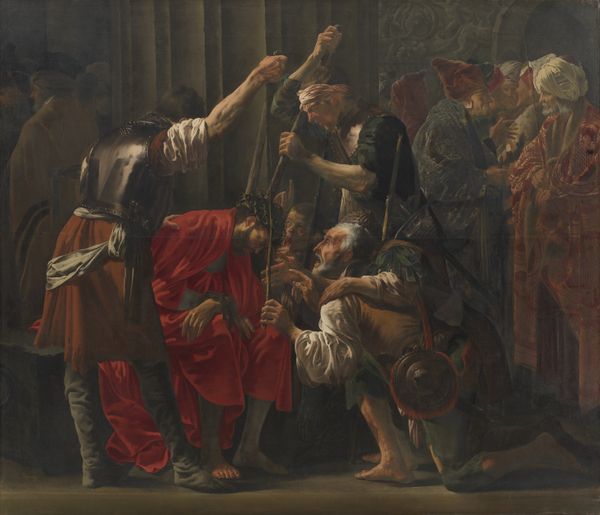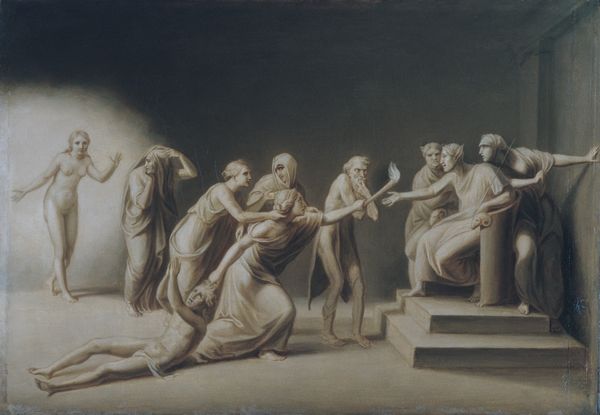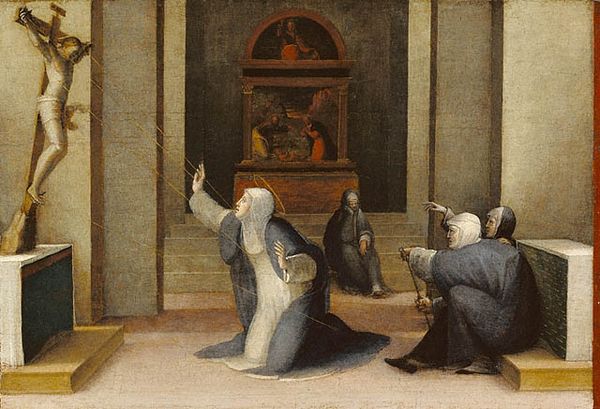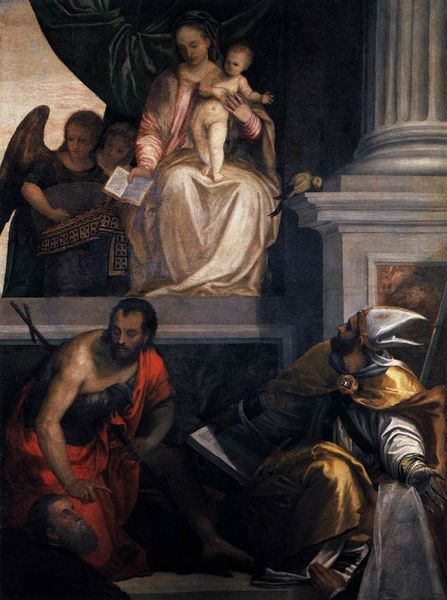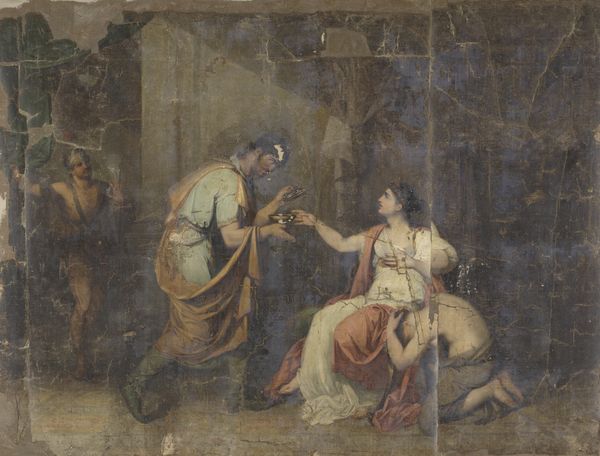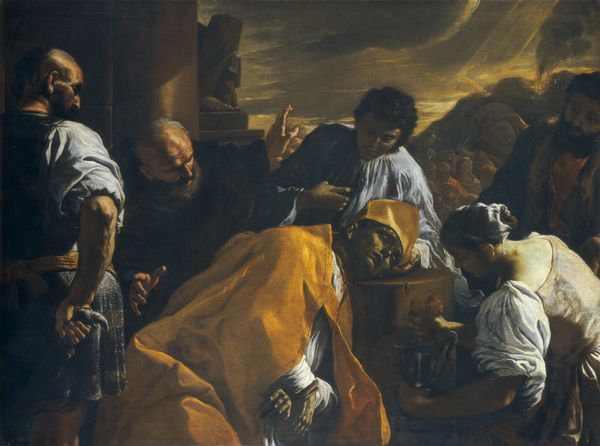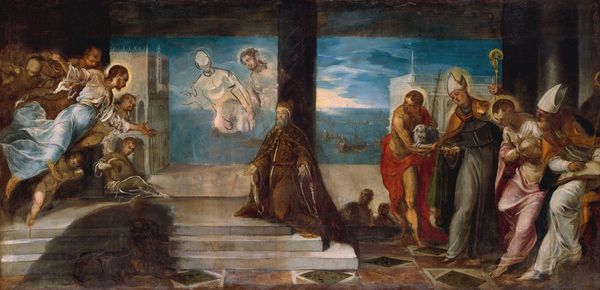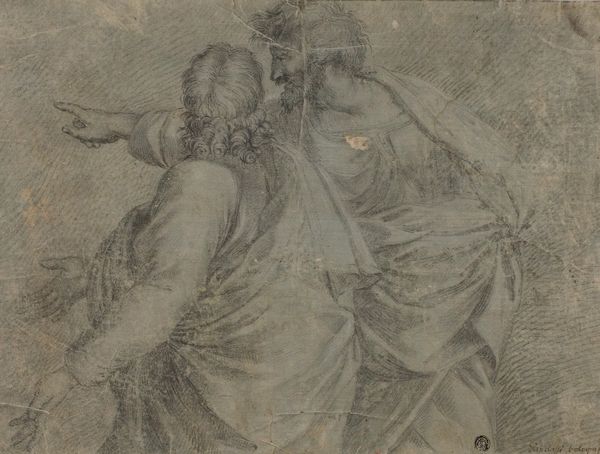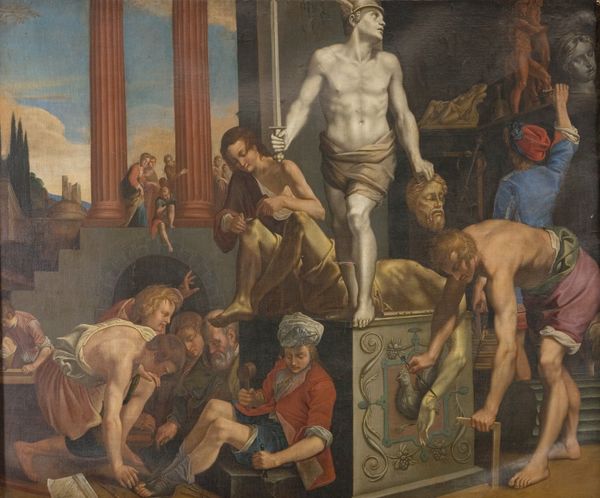
oil-paint
#
narrative-art
#
baroque
#
dutch-golden-age
#
oil-paint
#
figuration
#
oil painting
#
history-painting
Dimensions: height 62 cm, width 35 cm, depth 10 cm
Copyright: Rijks Museum: Open Domain
Curator: Ah, yes, "The Raising of Lazarus," likely painted by Rembrandt van Rijn sometime between 1630 and 1642. The dramatic subject matter certainly leaves an impression. Editor: That's putting it mildly. It feels like stepping into a dream—or maybe a nightmare. The darkness, the way the figures emerge from it...it's heavy, almost suffocating. Like witnessing something not meant for mortal eyes. Curator: Observe how Rembrandt orchestrates light and shadow. The chiaroscuro technique, a hallmark of Baroque painting, amplifies the emotional intensity. The stark contrast illuminates Lazarus as the focal point while cloaking the surrounding figures in varying degrees of obscurity. This invites an engagement that’s simultaneously revealing and concealing. Editor: Exactly. We see just enough. Lazarus himself seems caught between worlds, pale and unreal. And then there’s that figure completely shrouded in black—they give me the shivers. It's as if grief itself has taken human form. Do you think Rembrandt’s playing with ideas of sight, knowledge, and the limits of perception? Curator: Intriguing thought. In semiotic terms, we could analyze the use of light as a signifier. It's not merely illumination; it functions as a symbol for divine intervention, truth, or even, dare I suggest, the aesthetic revelation inherent in art itself. The darkness then could represent the unknown. Editor: Maybe, or maybe it's simpler than that. Grief, faith, and the raw, terrifying power of life and death made visible through pigment and brushstroke. Rembrandt just gets to the heart of the matter. The details almost feel beside the point, it could just be that stark composition that conveys its significance. Curator: That perspective definitely enriches how we think of its impact. Focusing too narrowly can definitely be limiting! Editor: It definitely goes to show, art is a deeply personal conversation after all. Thank you.
Comments
No comments
Be the first to comment and join the conversation on the ultimate creative platform.
